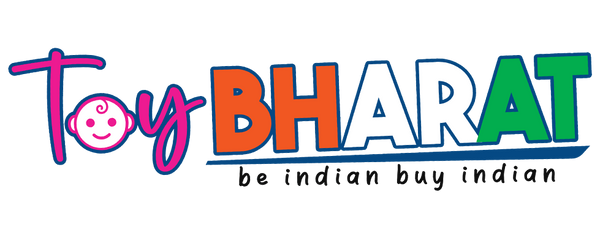In a world dominated by digital screens and battery-operated gadgets, Indian wooden toys stand out as a timeless and valuable resource for childhood development. These beautifully crafted toys not only offer endless hours of imaginative play but also play a crucial role in improving hand-eye coordination in children. In this blog, we’ll explore the unique benefits of Indian wooden toys and how they help enhance your child's motor skills and overall development.
The Charm of Indian Wooden Toys
- Rich Heritage and Craftsmanship
Indian wooden toys have a rich heritage, deeply rooted in traditional craftsmanship. Artisans use sustainable wood and non-toxic colors to create toys that are not only safe but also aesthetically pleasing. Each toy is a work of art, reflecting India’s cultural diversity and artistic heritage.
- Eco-Friendly and Safe
In an era where environmental consciousness is growing, wooden toys offer an eco-friendly alternative to plastic. They are biodegradable and often made from sustainably sourced wood. Additionally, these toys are painted with natural dyes, making them safe for children to handle and play with.
How Wooden Toys Enhance Hand-Eye Coordination
- Grasping and Manipulation
Wooden toys such as building blocks, puzzles, and stacking toys require children to grasp, hold, and manipulate objects. These actions help strengthen the small muscles in their hands and fingers, crucial for fine motor skills development. As children stack blocks or fit puzzle pieces together, they learn to control their hand movements and improve their grip.
- Visual Tracking
Playing with wooden toys helps children develop visual tracking skills. When a child rolls a wooden car across the floor or moves a bead along a wooden maze, their eyes must follow the moving object. This activity enhances their ability to track objects visually, which is essential for reading and writing skills later on.
- Coordination and Timing
Wooden toys often require precise movements and timing. For example, threading beads onto a string or inserting shapes into a sorter demands coordinated efforts between the eyes and hands. These activities teach children to synchronize their hand movements with what they see, improving their overall coordination.
- Problem-Solving Skills
Wooden puzzles and construction toys encourage problem-solving and critical thinking. As children figure out how to fit pieces together or build structures, they develop spatial awareness and cognitive skills. This process involves hand-eye coordination as children adjust their actions based on visual feedback.
- Repetitive Practice
The tactile nature of wooden toys invites repetitive play. Children enjoy the smooth texture and weight of wooden toys, leading them to play with these toys repeatedly. Repetition is key in mastering hand-eye coordination, as it allows children to practice and refine their skills continuously.
Popular Indian Wooden Toys for Hand-Eye Coordination
- Building Blocks
Simple yet versatile, wooden building blocks are excellent for developing hand-eye coordination. Children can stack, align, and balance these blocks, enhancing their motor skills and spatial awareness.
- Puzzles
Wooden puzzles come in various shapes and complexities. They require children to identify, match, and fit pieces into corresponding slots, improving their problem-solving abilities and hand-eye coordination.
- Bead Mazes
These classic toys involve guiding beads along a winding path. This activity helps children develop precise hand movements and visual tracking skills.
- Shape Sorters
Shape sorters challenge children to match shapes with corresponding holes. This activity enhances their cognitive abilities and coordination as they manipulate each shape to fit into the correct slot.
- Pull and Push Toys
Wooden pull and push toys encourage movement and coordination. As children pull a wooden toy behind them or push it across the floor, they learn to control their speed and direction, honing their gross motor skills.
Choosing the Right Wooden Toys
When selecting wooden toys to improve hand-eye coordination, consider the following tips:
Age Appropriateness: Choose toys that match your child's developmental stage to ensure they are both engaging and challenging.
Quality and Safety: Opt for toys made from high-quality, non-toxic materials. Ensure they have smooth edges and are painted with safe, natural dyes.
Variety: Provide a range of toys that target different skills, from building blocks to puzzles and bead mazes.
Conclusion
Indian wooden toys are more than just playthings; they are tools that foster essential developmental skills in children. By incorporating these timeless toys into your child's playtime, you can enhance their hand-eye coordination, boost their cognitive abilities, and nurture their creativity. Embrace the beauty and benefits of Indian wooden toys and watch your child's skills flourish through the magic of play.


